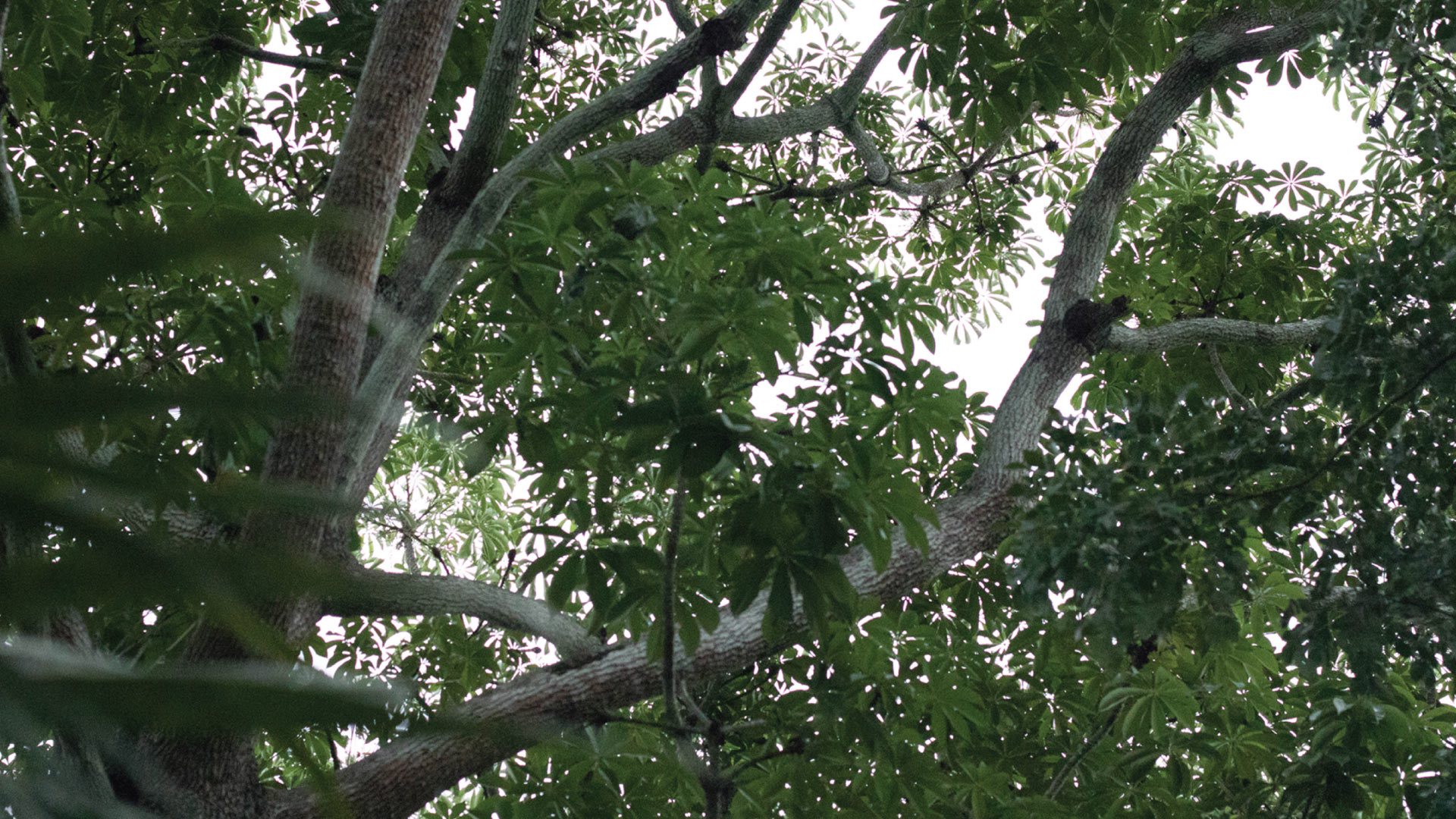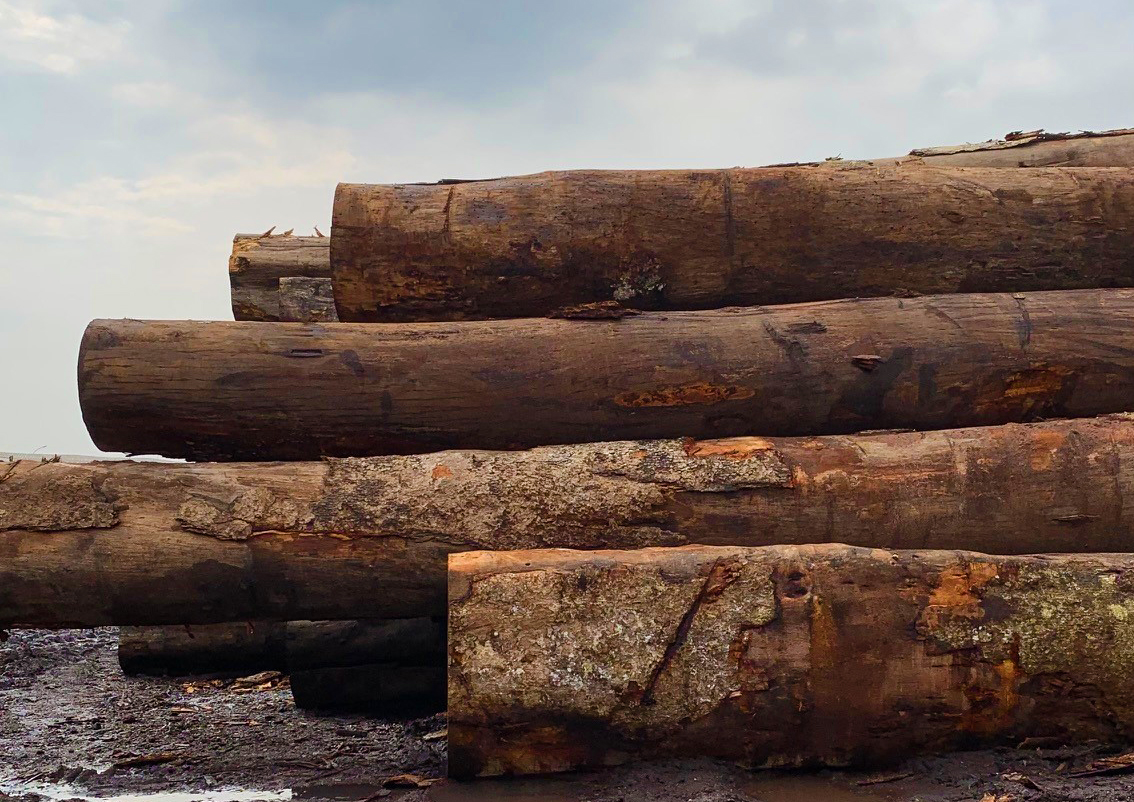Platowood Fraké — one of our signature wood products. But before we give it that name, it goes through a considerable journey: from harvesting to our unique modification process. Here, we outline the path it takes and the properties of this natural, renewable material.
The Fraké tree
Fraké is a hardwood species — a large and fast-growing tree native to West Africa. Its size is reflected in its Latin name: Terminalia superba. Through natural regeneration, a single seed can grow into a 50-meter-tall tree in just 30 years. However, Fraké has a relatively short natural lifespan and is therefore not naturally durable — often considered “weed” in its native region. Locally, there’s little use for the wood due to its vulnerability to insects and climate-related decay.

(Photo: Terminalia Superba)
Testing Different Wood Species
Years ago, Platowood began experimenting with various wood types. We quickly learned that some species responded better to our modification process than others. The ideal candidates? Fast-growing and short-lived by nature. One species stood out: Fraké.
It was a perfect match — a wood with low local value that we could sustainably enhance, increasing its CO₂ storage potential. It marked the beginning of a long-standing relationship — one we’ve shared with many architects who have since embraced it too.
Forests and Forest Management
The Fraké used by Platowood comes from responsibly managed, certified forests. But how does such forest management work?
Each forest concession is divided into 30 sections. The leaseholder is allowed to harvest from just one section per year, leaving the rest untouched for 29 years. The number of trees harvested depends on the area’s size — for example, only one tree per hectare (roughly two football fields) may be felled.
Respect for Nature
Every year, a stand inventory is conducted, and the leaseholder must submit a harvesting permit request to the local government. Trees are marked using GPS, allowing every log’s origin to be traceable.
Harvesting must be carried out responsibly, respecting both local working conditions and the surrounding ecosystem. Platowood ensures compliance through annual audits.
After harvesting? No human intervention is needed to regenerate the forest. In the jungle, nature takes care of that. The harvested trees — about 80 cm in diameter — are sawn into rough planks at local sawmills and sorted for export. The Fraké wood is then shipped back to Europe on a roro vessel, heading toward the Port of Antwerp.
Stay tuned for part 2 next week! That’s when Fraké wood arrives at our yard in Arnhem — located at the most sustainable industrial park in the Netherlands — and becomes Platowood Fraké.
